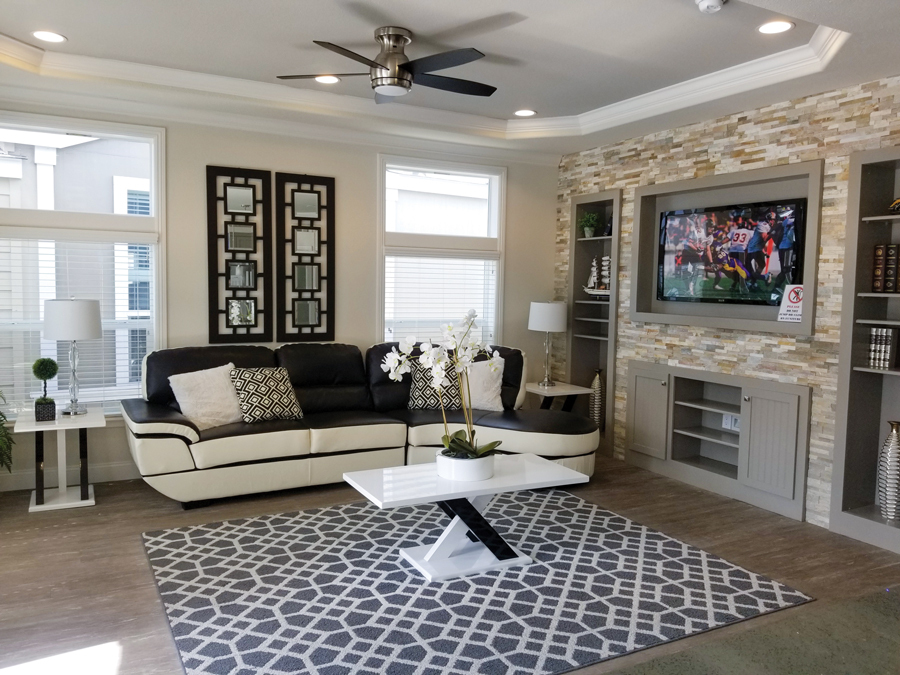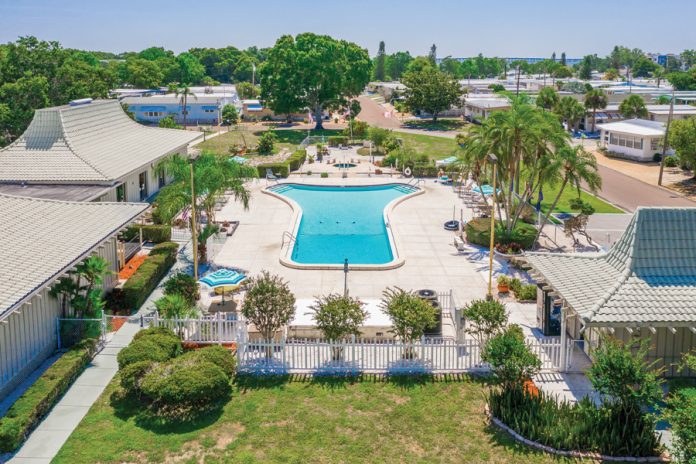On the national level, manufactured housing is widely available and the most often used form of affordable housing, particularly as a path to homeownership. Its affordability and availability require no government subsidies and about 22 million people in the U.S. live in a mobile home or manufactured home.
But what is the value of manufactured homes to a community, on the local level?
Manufactured homes, whether placed on private property or in a land-lease community provide a great amount of diversity for the homebuyer. And diversity in housing is exactly what the domestic market today dearly needs.
What Makes Manufactured Housing Diverse?
A new 747 square-foot single-section home can be purchased through a variety of finance options for little more than $20,000. It is very likely that the same web retailer, factory, community, or retail home center can provide the very next homebuyer a new 2,600 square-foot home for something less than $200,000. Some builders today are making multi-section homes that exceed 3,000 square feet, and many of the larger homes can be built to HUD Code or made for local modular specifications, each eligible for financing via a conventional mortgage.
Of the nearly 100,000 new manufactured home units shipped in the U.S. in each of the recent years, about a third are destined for land-lease communities, though a greater percentage of the homes could fit nicely in a planned community. It’s only a matter of homebuyer preference that brings those very same homes, or others of varying configuration and size, to open land in rural, suburban, or urban infill settings.
Manufactured homes can be rural getaway bungalows and just as seamlessly placed in R-1 residential settings alongside the Tudors, Dutch colonials, and mid-century modern homes we see everywhere.
Floor plans, home amenities, material choices, and color palettes are all equally as diverse. Many manufactured home sellers today provide customers the ability to drag and drop customized home choices, as well as reconfigure interior spatial concepts, incorporate flex rooms, and plan for future on-site additions to a new home.
Through Fannie Mae’s MH Advantage and Freddie Mac’s CHOICEHome special financing programs, homebuyers today can get a new manufactured home built at about half the cost of a similar site-built home with a raised roofline, front porch, driveway and attached garage, hardwood cabinets, enhanced energy efficiency, and much more. Again, these new manufactured homes can be placed on private land, used in new development, or provide much-needed new homes in already established residential settings.
For those who read these words, and feel their temperature rise with the ringing sound of some long-ago voice talking about home values this and depreciation of that, please suspend doubt long enough to read the 2018 FHFA House Price Index pilot study on how manufactured homes retain value in a fashion similar to site-built, a valuable resource within an environment with far too few opportunities to assess such things, shouldering against the forces of exclusionary zoning and NIMBYism.

Who Needs Affordable Housing?
Every locale in the U.S. could use a certain degree of added affordable housing. For decades, home starts and wages have been outpaced by demand and rising home prices. The gap is and has been widening.
In many higher-priced markets, this means there are few if any affordable homes for would-be residents within the middle to low-income strata. The big cities and resort towns, and increasingly the mid-size cities, too, cannot find hotel, restaurant, and theater employees who can feasibly live and work in the same community. This, of course, extends into many other areas of employment, including the hospitals, schools, banks, grocery markets, care facilities, and, in fact, the very factory that employs people to build and move our homes.
Building Community Within Community
So, is manufactured housing diverse?
The manufactured home, the factory-built home, affordable and sustainable, helps to build communities by bringing all of the participants and stakeholders together. The principal, the teacher, the parent, and the student all live in the same local community.
Additionally, there are more than 43,000 land-lease communities in the United States. In each of them, manufactured homes are the home of choice.
Manufactured homes within land-lease communities can be purchased, placed new, or rented in communities designed for families or communities designed for retirees, communities designed for workforce living or communities designed for recreational endeavors like golfing, boating, gardening, or going to the beach.
So, you have the country’s largest non-subsidized segment of affordable housing populating a great majority of the land-lease homesites too?
This little “niche” corner of the U.S. housing market, responsible most years for something less than 10% of housing starts, already makes up the most diverse, affordable, readily available and sustainable path to homeownership within a stressed market composed of eager and deserving consumers, the first-time homebuyers, the empty-nesters, and every person or family in between.













